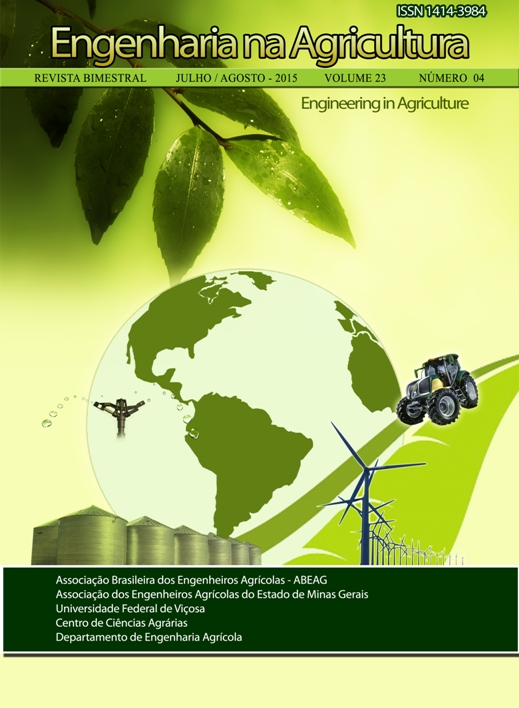TEMPORAL EVOLUTION OF DEFORESTATION IN THE WATERSHED OF THE ESTIVA RIVER, BRAZIL - DOI: 10.13083/1414-3984/reveng.v23n4p363-370
DOI:
https://doi.org/10.13083/reveng.v23i4.600Keywords:
agricultura, cerrado, sensoriamento remotoAbstract
The watershed of the Estiva river (3,009.00 km2), a tributary of Uruçuí-Preto river located in the state of Piauí, Brazil, is undergoing a process of deforestation to opening new areas for soybean cultivation, which may be one of the practices that most causes environmental impacts in the region. Thus, the present work sought to analyze the temporal evolution of land use in the watershed of the Estiva river between the years of 1984 to 2010. Six satellite images of the TM sensor on the Landsat 5 satellite were used from years 1984, 1990 1996, 2003, 2006 and 2010. First the images were pre-processed for contrast and geometric corrections. After the initial corrections the images were classified according to an automatic supervised method using the Maximum Likelihood algorithm. The results showed there was an increase of 272.41% (658.26 km2) in land use and occupancy of soil by crops and a consequent advance in deforestation of 30.01% (686.50 km2) in the Cerrado areas and 24.60% of all native forest areas in the Estiva river watershed between the years 1984 to 2010. A total of approximately 680 km2 of the Cerrado area was deforested between 1984 to 2010 for the implementation of crops in the Estiva river watershed.Downloads
Downloads
Published
How to Cite
Issue
Section
License
Authors who publish with this journal agree to the following terms:
The author(s) authorize(s) the publication of the text in the journal;
The author(s) ensure(s) that the contribution is original and unpublished and that it is not in the process of evaluation by another journal;
The journal is not responsible for the views, ideas and concepts presented in articles, and these are the sole responsibility of the author(s);
The publishers reserve the right to make textual adjustments and adapt texts to meet with publication standards.
From submission, the author is fully conceding the paper's patrimonial rights to the publication, but retaining the owner of its moral rights (authorship and paper's identification) according to Creative Commons Attribution-Noncommercial.








 Licensed by
Licensed by 